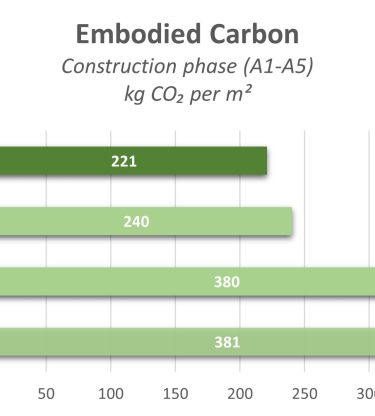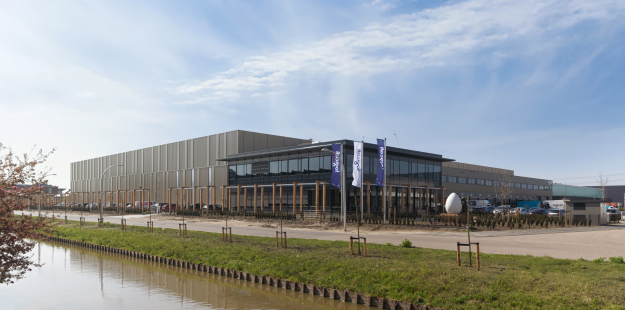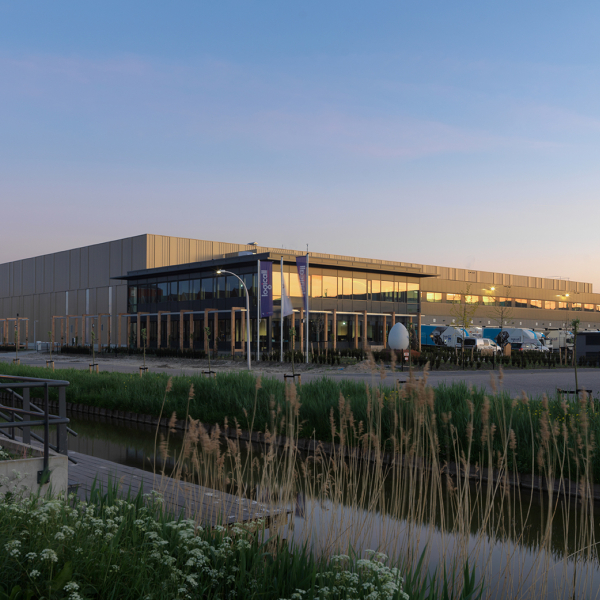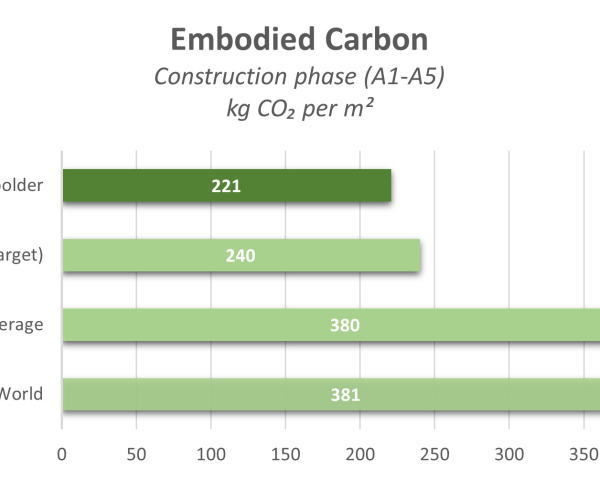Sustainable logistics centre ABC Harnaschpolder more than ‘Paris Proof’
A calculation via the specialized software platform WiseBrick shows that the amount of material-related CO2 for the construction of the new logistics center ABC Harnaschpolder remains well within the standard of the Paris Agreement.

The market for distribution centres has grown strongly in recent years, from 26 million square metres in 2012 to 45 million square metres today. This brings with it responsibilities for developers, especially when it comes to the sustainability of buildings. Clients are increasingly asking for buildings with, for example, a BREEAM certification for sustainability performance.
In addition, themes such as ESG, EU Taxonomy, CSRD – as a result of the European Green Deal – are becoming increasingly important. Reducing CO2 emissions is one of the most important goals here. VolkerWessels Logistics Development (VWLD) embraces this goal and wants to demonstrate it, for example in the case of the recently completed logistics centre ABC Harnaschpolder in Businesspark Haaglanden.

Embodied CO2
Every construction project has a carbon footprint, or CO2 that is emitted during the production and transport of materials, the construction and operation of the real estate and the eventual demolition. The climate goals of the Paris Agreement (2015) stipulate, among other things, how much CO2 a square meter of construction project may ‘cost’ in order to achieve a climate-neutral world in 2050.
Erjan Sprakel, director of VWLD: “We wanted to know and demonstrate how we have performed in this regard in the case of ABC Harnaschpolder. That is why, together with our development partner Delta Development, we have had the complete amount of material-related CO2 for the construction phase of this project calculated in great detail and also had it steered towards Paris Proof during the design process using the WiseBrick platform. Just as we did earlier for our joint project HelloWorld at Schiphol.”
Paris Proof
Co-director Roeland van den Berg adds: “The WiseBrick report shows that we have managed to achieve an ‘as built’ score of 221 kilograms of CO2 per square meter for ABC Harnaschpolder. That is well below the 240 kg CO2 per square meter that is the maximum allowed according to the DGBC to be Paris Proof. A good performance, because many projects are only calculated in the design stage, for example for an MPG calculation, but ‘as built’ often comes out higher than the Paris Proof standard when this is calculated.”
The focus on sustainability is certainly not new to VWLD, according to Erjan Sprakel: “Years ago, together with Delta Development, we were at the cradle of Park 20|20 in Hoofddorp, the first cradle-to-cradle business park in the Netherlands. Since then, we have been on a journey to continue improving our performance. We like to invest in sustainability, not only because the market demands it, but also out of moral awareness. Moreover, real estate that is truly sustainable entails lower costs in the long term and retains its value. That is also an important argument for investors to invest in this type of real estate.”

